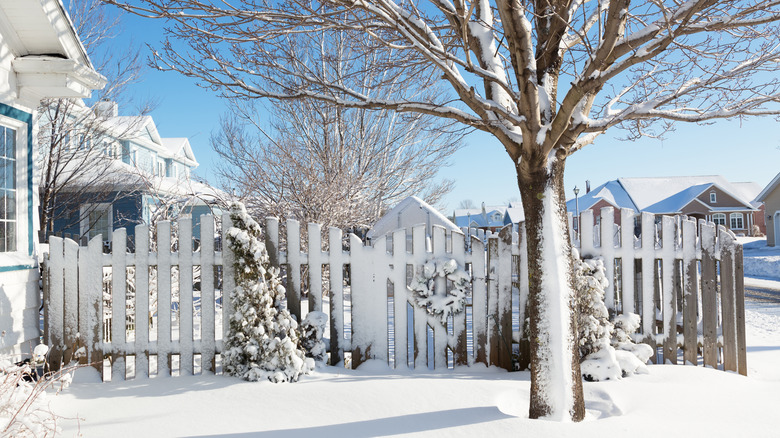Garden Trees, Shrubs & Vines
Lucy Clark
Few things are as relaxing for the soul as standing in the middle of a gorgeous forest, surrounded on all sides by lush trees. And, according to the New York State Department of Environmental Conservation, it can be just as beneficial for your body. Studies show a correlation of looking at and being surrounded by trees with lower levels of cortisol, adrenaline, and blood pressure.
Trees can be more than decorative, too. While deciduous and evergreen trees alike can add plenty of star power to your backyard, providing both beauty along with privacy and shade, some go the extra mile and provide fruit. While some people are lucky enough to have all kinds of trees growing in their yards, others will have to spend time planting and nurturing them to fruition.
There are a variety of factors that go into growing a healthy, lush tree, but the first, and arguably most important, step is knowing when to plant them. Moreover, when not to plant them.
Avoid planting trees under certain conditions

Onepony/Getty Images
There are various factors that go into what makes a time of year or season unfavorable for planting in general, and trees especially. Your USDA hardiness zone, the zone of your tree, and whether it’s deciduous or evergreen are just a few. And in many cases, the best time of year nearly doubles as the worst, according to Plant Me Green.
The warmer your climate, the longer your tree-planting window will be. Temperature (and thereby, location) plays a major role in when are the best and worst times of the year to plant a new tree. For many areas around the country, the fall season often offers the best combination of factors.
Birches, maples, and oaks, for example, should do well with a fall planting. This is because deciduous trees especially are more focused on root growth and survival as opposed to growing new leaves, as House Logic explains.
However, the biggest obstacle in planting a tree is making sure you get them in the ground in time. If you wait too long into fall and winter — anytime past October, really — you run the risk of the ground being frozen and physically too hard to dig up.
A good rule of thumb is to go by local temperatures — for deciduous trees, the worst time of the year to plant them would be after the ground has reached 50 degrees Fahrenheit, and for evergreen trees, the threshold is 60 F. In most of the country, this tends to be late fall to early winter, but it could be well into winter for others.



